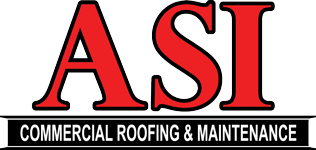When winds howl across the Midwest, they pose a serious risk to the integrity of your commercial roof. These strong storm systems can cause considerable damage, potentially leading to costly repairs or even roof system failure. It’s important to monitor these storms and the condition of your roof before and after a weather event.
Understanding the Threat – Wind Speed and Force
The speed of the wind is proportional to the force exerted by the wind. As wind speed increases, the risk of roof damage increases. Paying attention to wind speed helps you assess your potential for damage.
- 45-60 mph winds can result in minor damage such as punctures, or divots, in the surface from debris.
- 60-85 mph winds can cause significant damage such as structural damage to surfaces and HVAC systems
- 85 mph and higher winds are extreme and can cause extensive structural damage and even roof detachment
The force of the wind has strong effects, too. Roof areas are subject to both high and low pressure. Low pressure (or suction) is particularly damaging for flat roofs. As the wind blows across the flat surface, it can cause the roof material to lift and separate from the structure.
Damage from Debris
Intense winds frequently blow debris such as tree branches, hail, and sleet onto your roof. Frequently, damage is caused by this debris blowing around and knocking into HVAC systems and other functional ventilation systems. It is important to keep your roof free of tools and other items that could be blown around if an unexpected wind gust occurs. When debris damages the roof surface, moisture can penetrate underneath the roofing materials and lead to leaks.
Wind Scouring
Wind scouring involves strong gusts pulling off granules from the roof membrane or removing gravel placed on built-up roofs. While there may be no immediate visible damage, wind scouring significantly impacts the roof’s lifespan. The entire roofing system begins to deteriorate faster, potentially leading to partial or total roof system failure.
Wind Uplift
Wind uplift occurs when strong air gets underneath the roof materials and pulls them up. This leaves the roof looking wrinkled or bubbled because the roofing membrane or materials are no longer securely attached. Along the edges and corners of your roof, wind uplift pressure is at its peak. Once the edge of the roof is damaged, the entire roof system is compromised.
Signs of Wind Damage
After a winter storm, keep an eye out for these signs of wind damage:
- Damaged flashing
- Roof leaks that result in interior water stains
- Loose roofing material
- Dented or damaged ventilation systems
Remember that not all damage may be immediately visible. After a windstorm, a professional inspection can identify hidden damage and assess whether the roof’s structural integrity has been compromised.
Your commercial roof is more than just a shield — it’s an essential part of your business’s longevity. So, when strong winds put your roof at risk, be vigilant and protect your investment.
Contact ASI today for emergency repairs, routine inspections, and preventative maintenance.

